Under the brand statement of “creating the next ideal”,The watch brand “The CITIZEN』.
The dial of this brand usesThe world’s thinnest Japanese paper “Tosa Tengujoshi”is.
theOnly 0.02mm thick. How did the delicate Japanese craftsmanship, also known as the “Mayfly Wings”, fuse with Citizen Watch’s technology?
We asked Mr. Hiroshi Chinzei, the representative of Hidaka Washi (Kochi Prefecture), and Mr. Shinji Sato, who is responsible for the development of the dial elements at Citizen Watch, about the behind-the-scenes development stories and their thoughts on manufacturing.
An inevitable encounter between “eco-driving” that generates electricity with light and Japanese paper
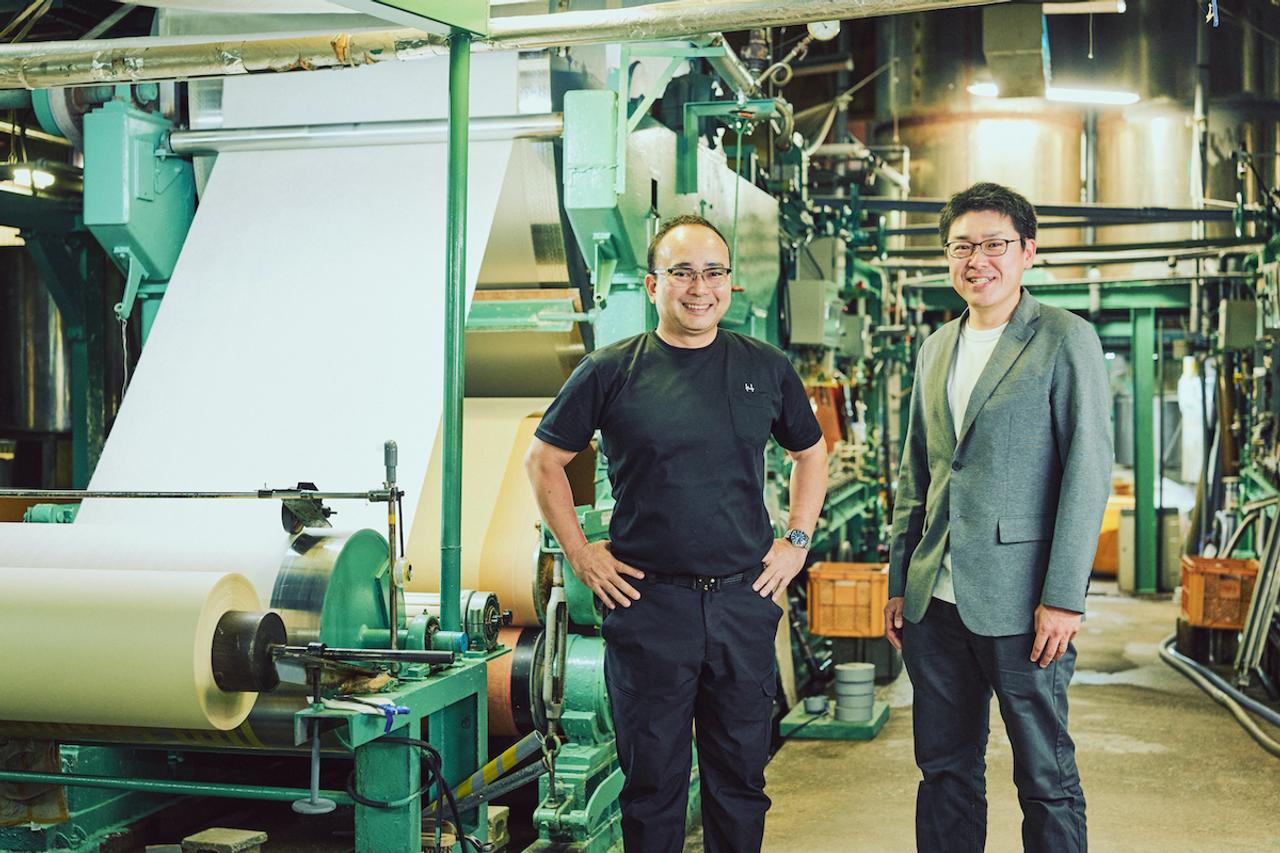
Mr. Hiroyoshi Chinzei, the representative of Hidaka Washi[left]and Mr. Shinji Sato of Citizen Watch[right]who continue to challenge beyond traditional crafts. At the Hidaka Washi factory, located in the mountains about an hour’s drive from Kochi Airport.
originallyThe CITIZENis a Citizen watchA product that embodies the corporate philosophy of “loved by citizens, contributing to citizens”Born as
With the motto of “Always look ahead and pursue the ideal” and “Stay close to the person who wears it”, we continue to pursue the essential value of a wristwatch based on the four axes of precision, quality, design and hospitality.
Such The CITIZEN isFirst Japanese paper dial model announced in 2017bottom.
Many people may be surprised at the seemingly contradictory combination of “Japanese paper on the dial of a watch” and “technology and traditional crafts.”
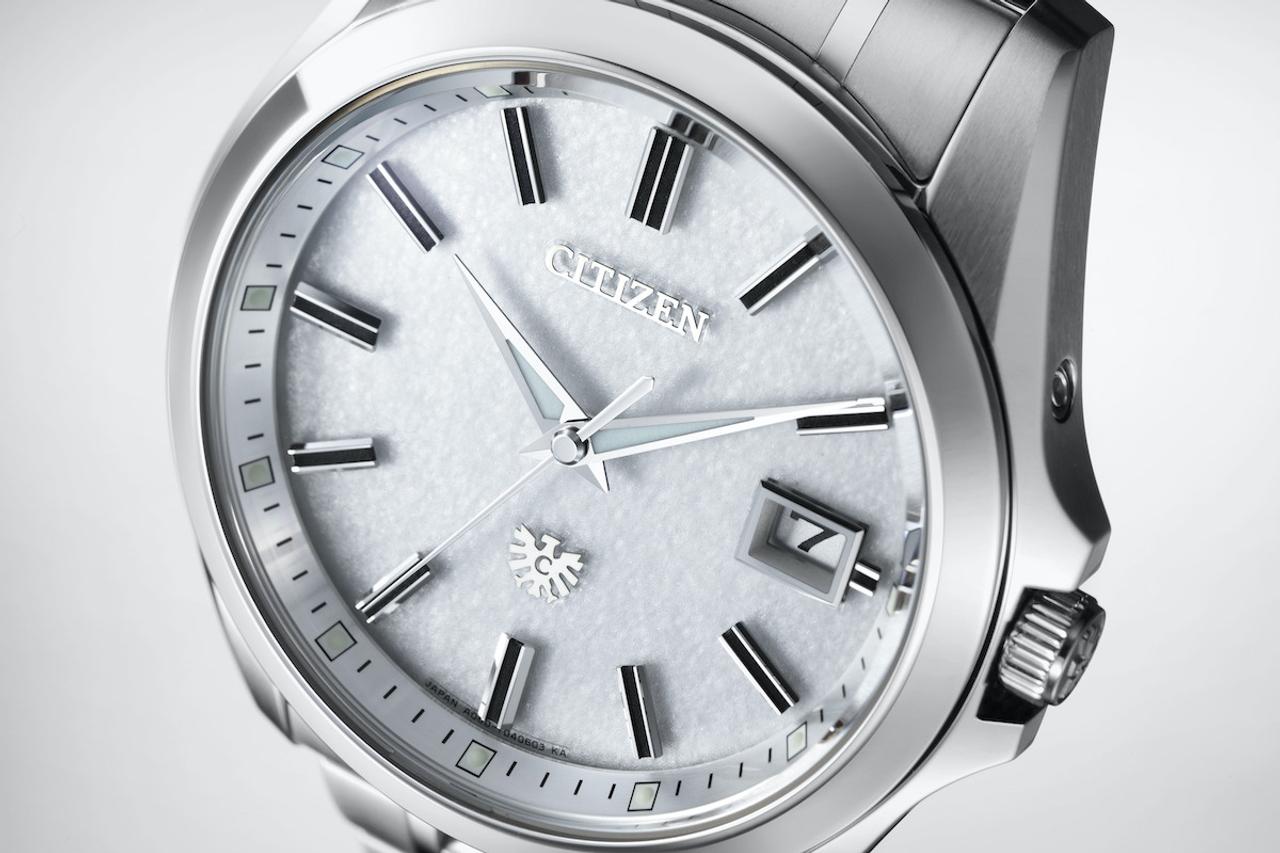
Japanese paper dial model of The CITIZEN.
In fact, the idea came about when it was developed in 1976.Citizen Watch’s original technology, photovoltaic “Eco Drive”was.
“Eco-Drive” is a cutting-edge photovoltaic power generation technology that converts sunlight and a small amount of indoor light into electricity to drive the clock, and stores the excess electricity in a secondary battery.
For some time now, there have been voices within the company saying, “I want to create a pure white dial with a sense of luxury” and “I want to create a dial using traditional crafts” for The CITIZEN.
However, in order to operate the “Eco Drive” installed in The CITIZEN, it is necessary to deliver light to the solar cell behind the dial, and the dial must be made of a material that clears the specified light transmittance.
“Within the development team, we have been discussing for many years what kind of material would be best, given the limited conditions.
Among them, “Washi”, which has a calm presence, elegance, is strong, and is a material that allows light to pass through, was selected.
Also, since we are a Japanese manufacturer, we wanted to incorporate traditional Japanese craft techniques.
Because of its transparency, Japanese paper goes well with Eco-Driving, and is sufficient as a material to imbue watches with emotional value.I came to the conclusion that.” (Mr. Sato)
At first I thought “what a joke”

Hidaka Japanese paper factory in Hidaka Village, Kochi Prefecture. Surrounded by greenery, you can hear the chirping of birds and the sound of running water.
Mr. Sato and the development team started by searching for Japanese paper that could be used for wristwatch dials and their producers from all over Japan.
About five years ago, through an introduction from Kochi Prefecture’s Paper Industry Technology Center, Mr. Sato learned of the existence of Hidaka Washi, which produces Tosa Tengujo paper.
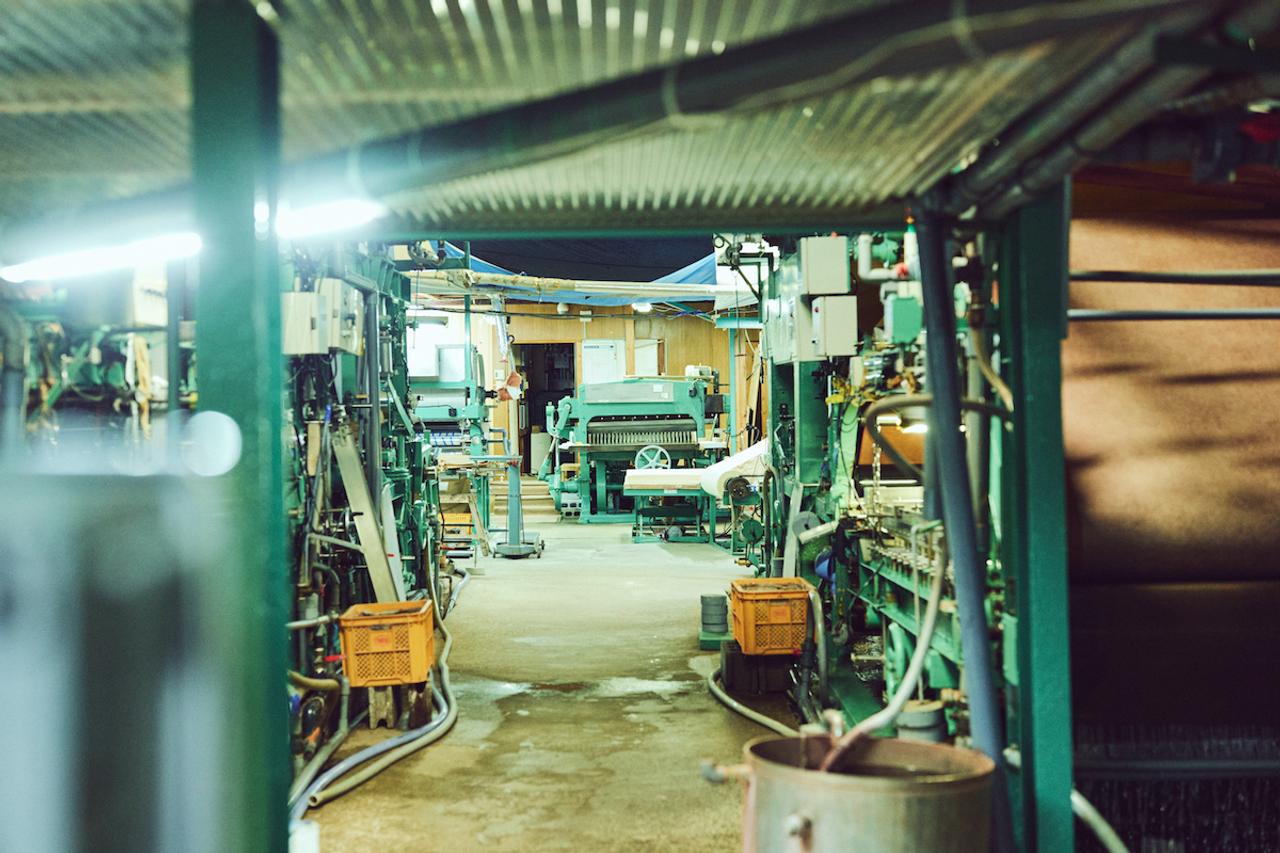
Inside the Hidaka Washi factory.
Mr. Chinzei of Hidaka Washi remembers the time when he heard that he wanted to use Tosa Tengujo paper for the dial of a wristwatch.
“At first I thought, ‘What kind of joke is this?.
Hidaka Washi was founded in 1945, and in recent years it has collaborated with companies and facilities, but watch dials are unprecedented.
However, Mr. Sato passionately explained why he wanted to use Tosa Tengujo paper, and said, “This person is serious.”
as weTradition will decline if it is only “protected”. I’ve always been working in a style that was said to be wrong and tried to do something new, so I thought I’d give it a try first.” (Mr. Chinzei)
Japanese paper used in the Louvre and the Metropolitan Museum of Art
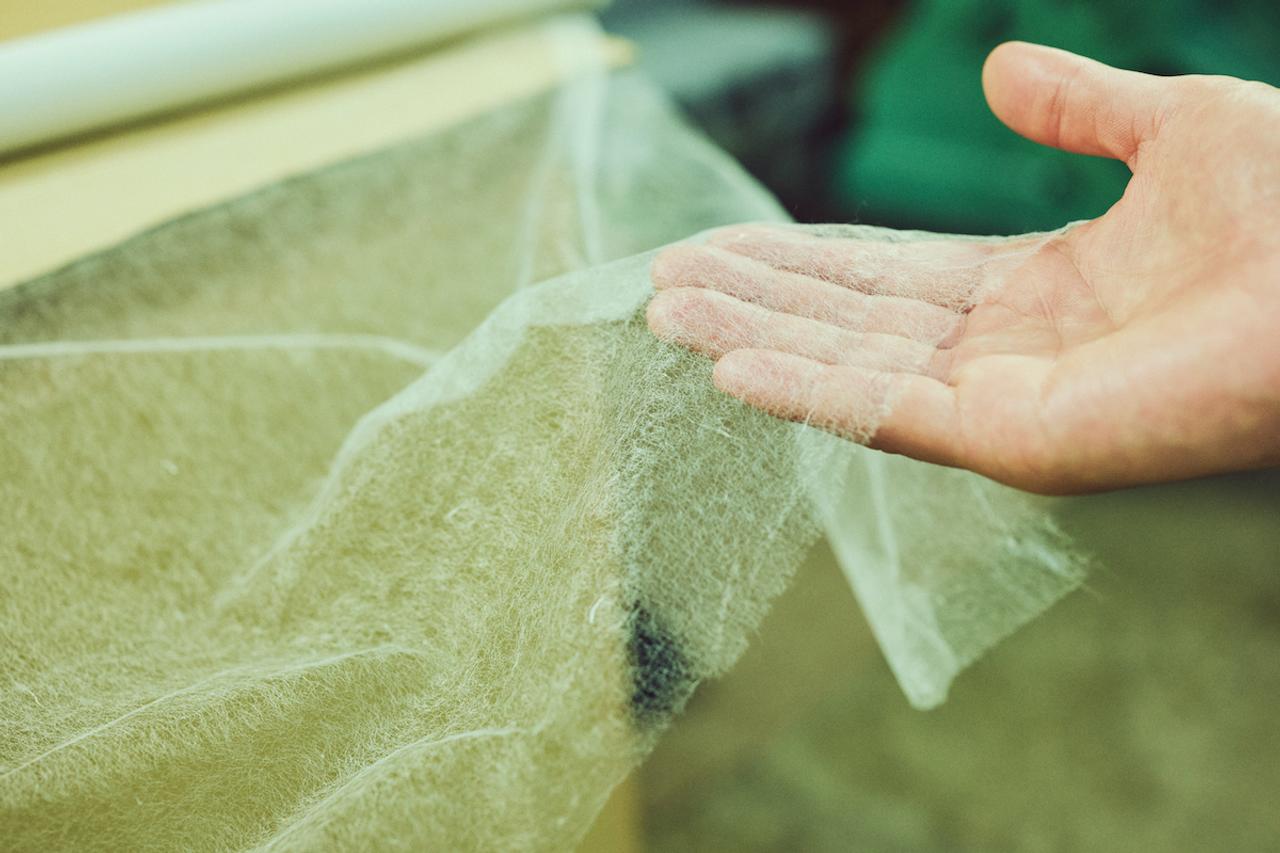
It’s so thin that you can clearly see what’s behind it.
Tosa Tengujo paper is one of the thinnest types of Japanese paper, with a thickness of 0.02mm.
Normally, Japanese paper is made by putting the fibers in a mixer and then putting them on a net to strain.
However, Tosa Tengujo paper is made thinner by washing the paper after it has been blended to remove the fine fibers. Only thick and long fibers remain,Paper with a strong sense of transparency, resembling a spider webIt’s finished.
Mr. Sato reveals the reason why he focused on Tosa Tengujo paper.
“Due to the structure of the watch, it is desirable that the material used for the dial be as thin as possible.
Tosa Tengujo paper is thin and strong, and there are more gaps between the fibers than regular Japanese paper.Therefore, even when dyeing and decorating Japanese paper, it is easy to maintain the transmittance.
With Tosa Tengujo paper, I thought that it would be possible to develop it in various ways while adhering to the transmittance standards of “Eco-Drive.”
So far, I have tried several models, such as a model with indigo dyeing using Tosa Tengujo paper and a model with gold and platinum foil, but these are probablyThis was not possible with other Japanese paper.That’s right.” (Mr. Sato)
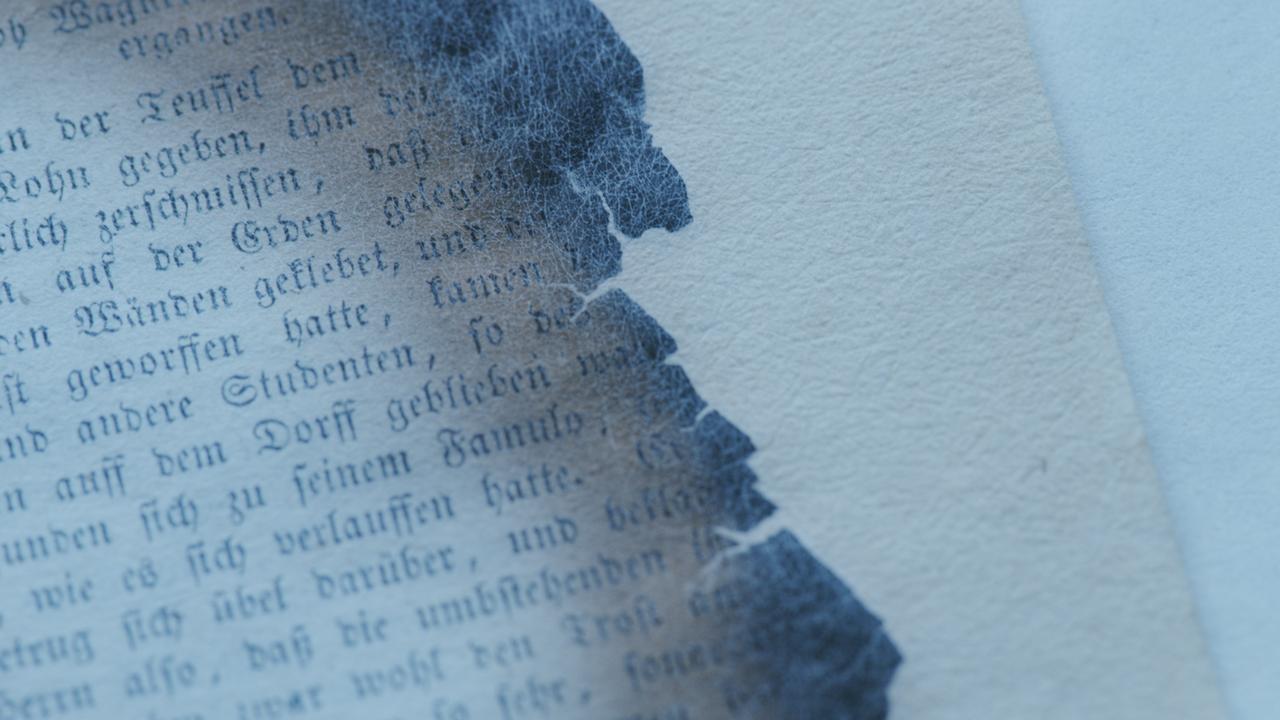
Due to its thinness, it is also used for the restoration of cultural properties and ancient documents.
“Furthermore, Hidaka Washi’s Tosa Tengujo paper has been exhibited in places such as the Louvre Museum, the British Museum, and the Metropolitan Museum of Art.It is also used for the preservation and restoration of cultural assets and ancient documents of world-famous museums..
Japanese technology recognized worldwide. I am proud that we were able to collaborate.” (Mr. Sato)
Made by hand and with original machines
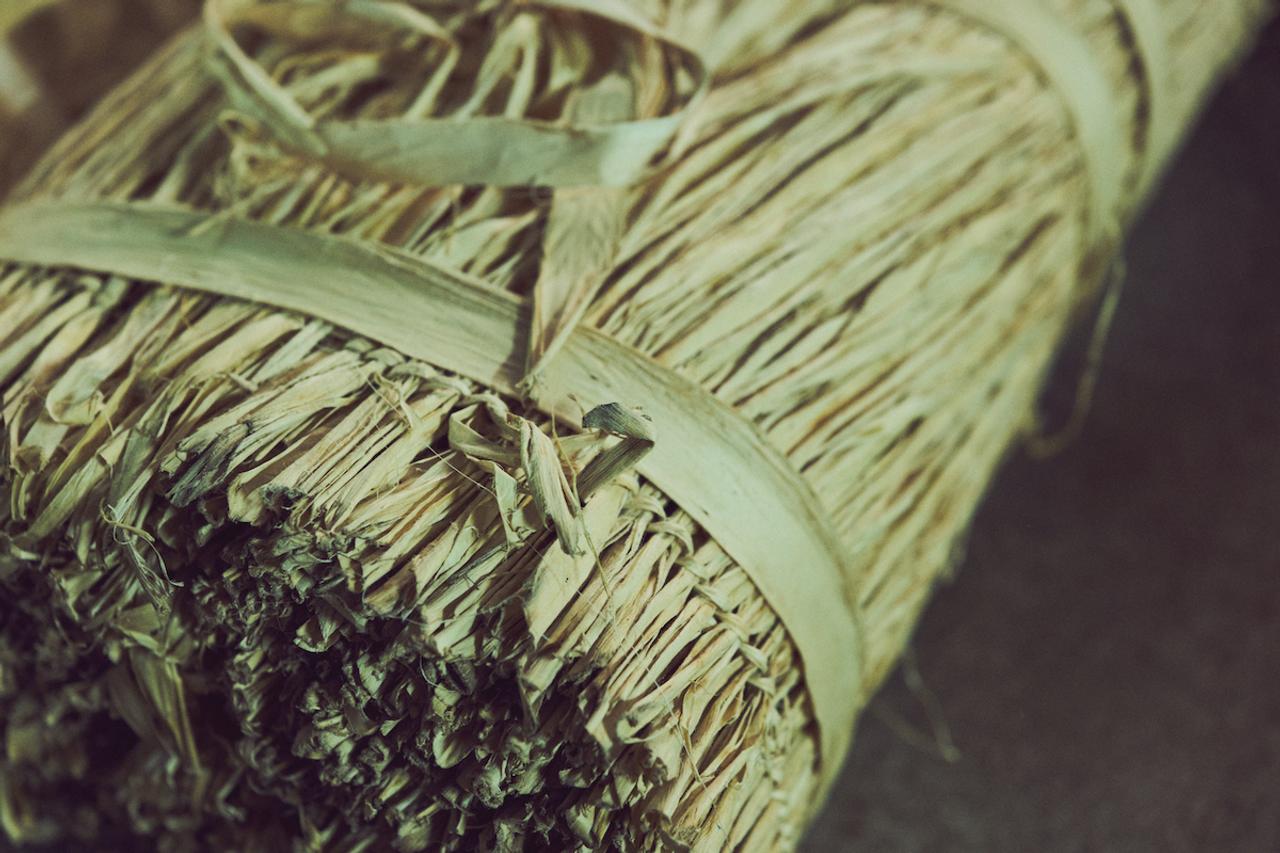
Kozo, the raw material of Japanese paper. The quality of Japanese paper changes depending on whether the kozo is good or bad.
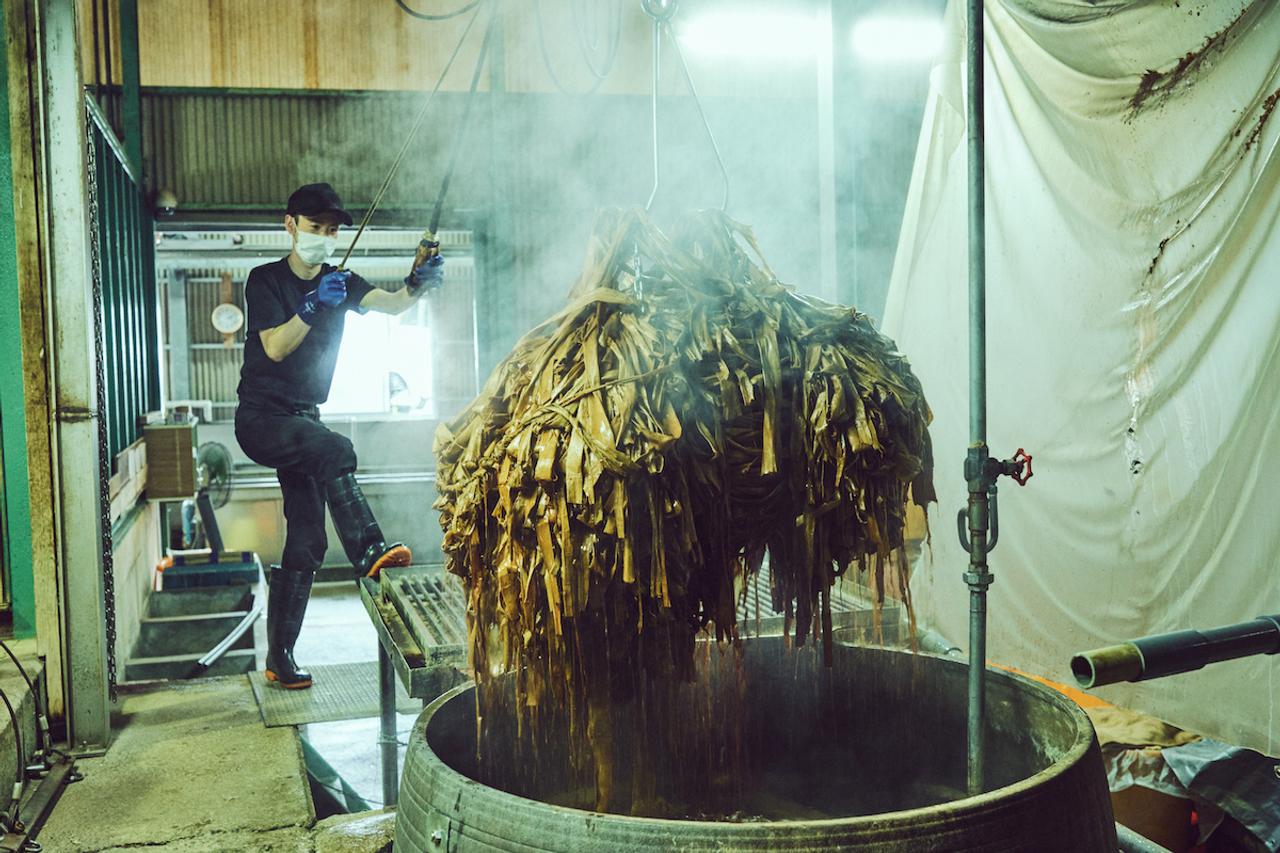
Boil the mulberry in a large pot. The process is adjusted according to the state of the kozo, the season to be processed, and the time of day.

After the ripening period, they are washed and dusted using running water from a nearby river. Remove any damage caused by the trees rubbing against each other. Everything is done by hand, and sometimes it takes several days until it is clean.
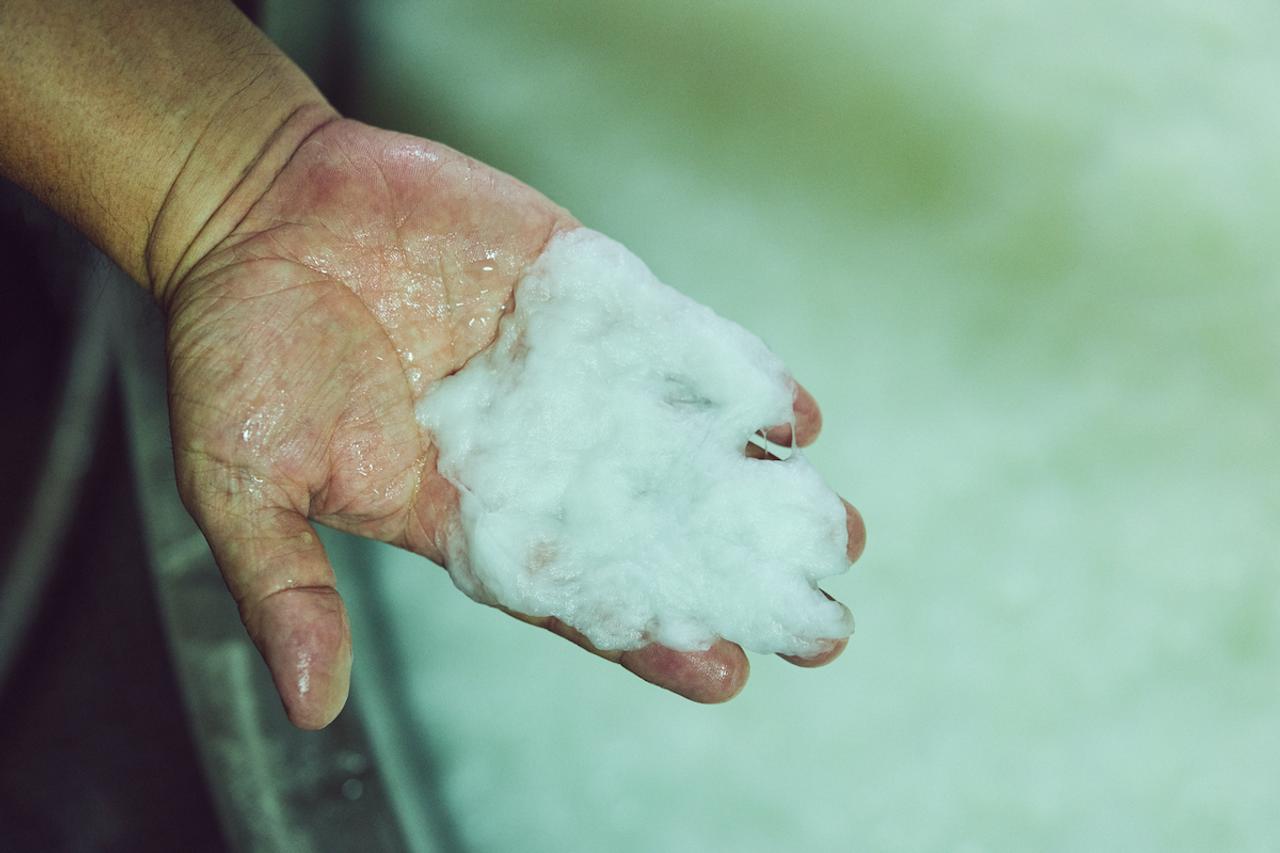
ground state. Tosa kozo has long fibers that are easily entwined, making thin yet durable Japanese paper. After this, it is finally time to make the raw material solution for Japanese paper.
During the actual production, Mr. Sato visited the Hidaka Washi factory and worked together.
On the day of the trial production, I attended the work at the factory all day long, and asked them to make a product with slightly different materials.over several monthsThe CITIZENTosa Tengujo paper dial model.
“While mainly using Tosa Tengujo paper, which was already in Hidaka Washi’s line-up, we also made Japanese paper mixed with golden fibers, and Unryu paper with a cloud-like pattern with enlarged lines.
Also, while looking at the finish of the Japanese paper, they responded to detailed requests such as adjusting the texture.” (Mr. Sato)

At Hidaka Washi, we have introduced an original paper machine in the final process in order to prevent variations in thickness and size and to make rolls of washi that can be used as industrial products.
Among the lineup of The CITIZEN, which has released several color variations, the one that left an impression on Mr. Sato was the one with a dial using black Japanese paper.
It is said that he had a lot of trouble figuring out how to show the beauty of the fibers of the black washi paper as a watch dial.
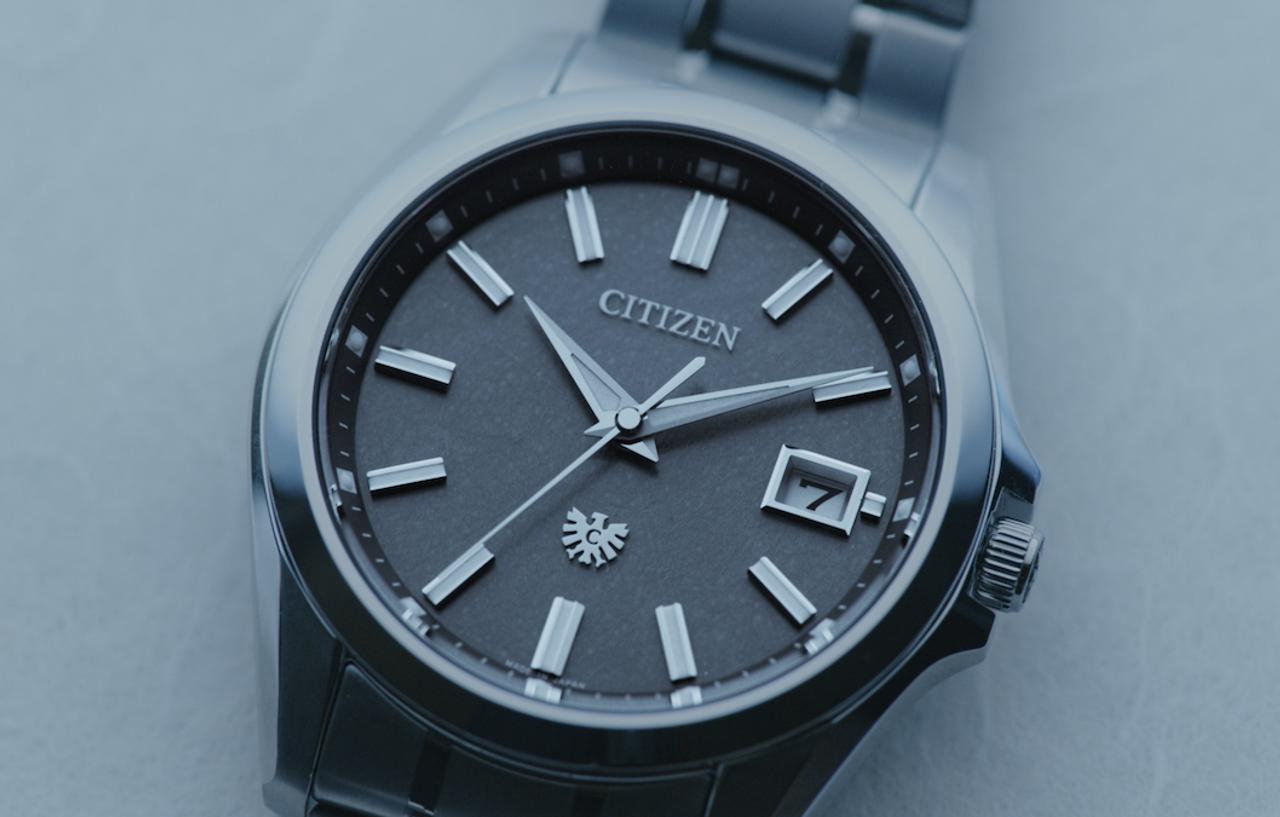
“When dyeing washi paper, there was fading and discoloration due to UV rays and time. This is something that cannot be helped because it changes depending on the dye, but Citizen Watch has eliminated discoloration by suppressing discoloration with its own technology and ingenuity.
We were able to concentrate on making washi paper because of the sincerity that we could glimpse in our exchanges.” (Mr. Chinzei)
A watch that is not only practical but also fun to wear
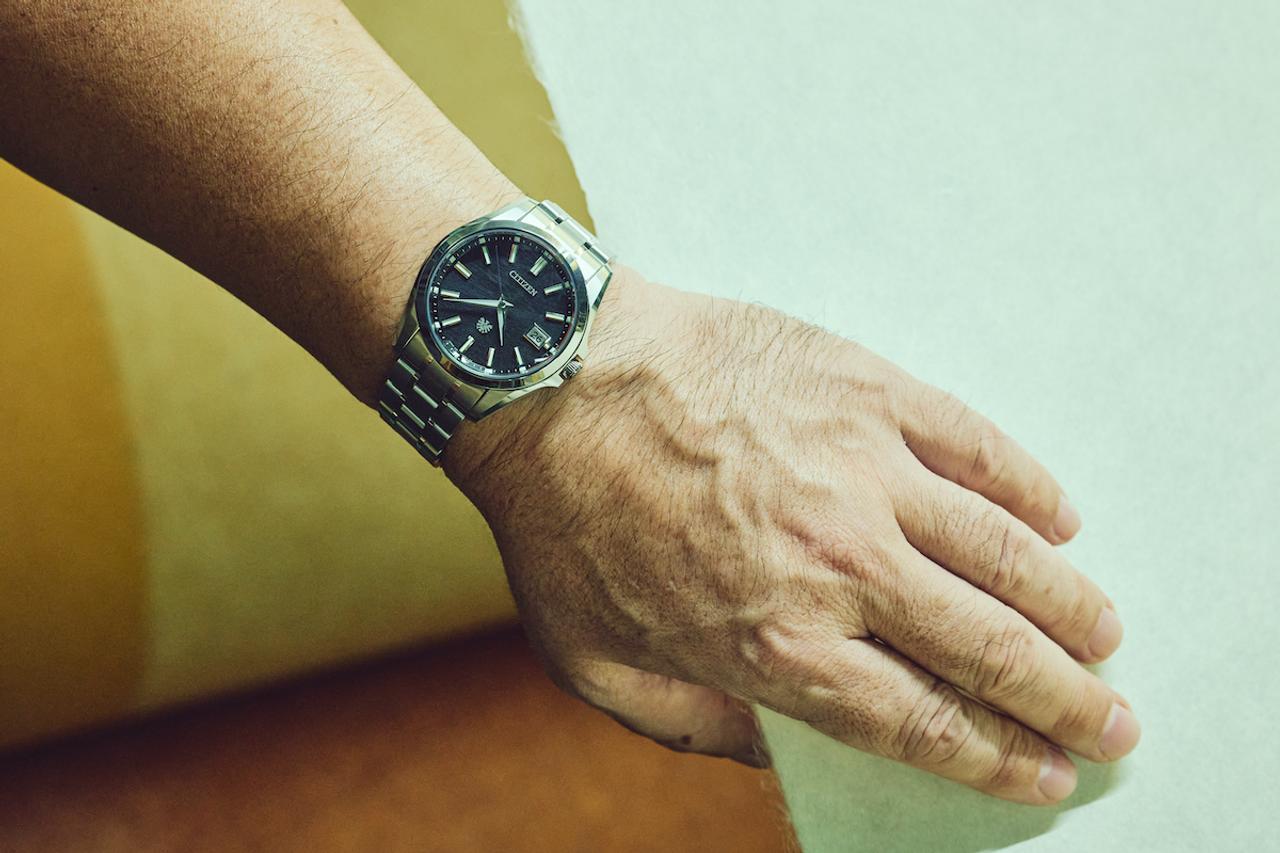
Completed while clearing various hurdlesThe CITIZENWhat kind of existence do you want to be for users?
“In this age of digital things, many people may think that it is not necessary to wear an analog watch. Even so, I think that the fact that there are still people wearing it is because analog watches have their own charm and good points.
The CITIZEN isA watch that “stays close to the person who wears it”I am aiming for I want to create watches that are loved across generations.” (Mr. Sato)
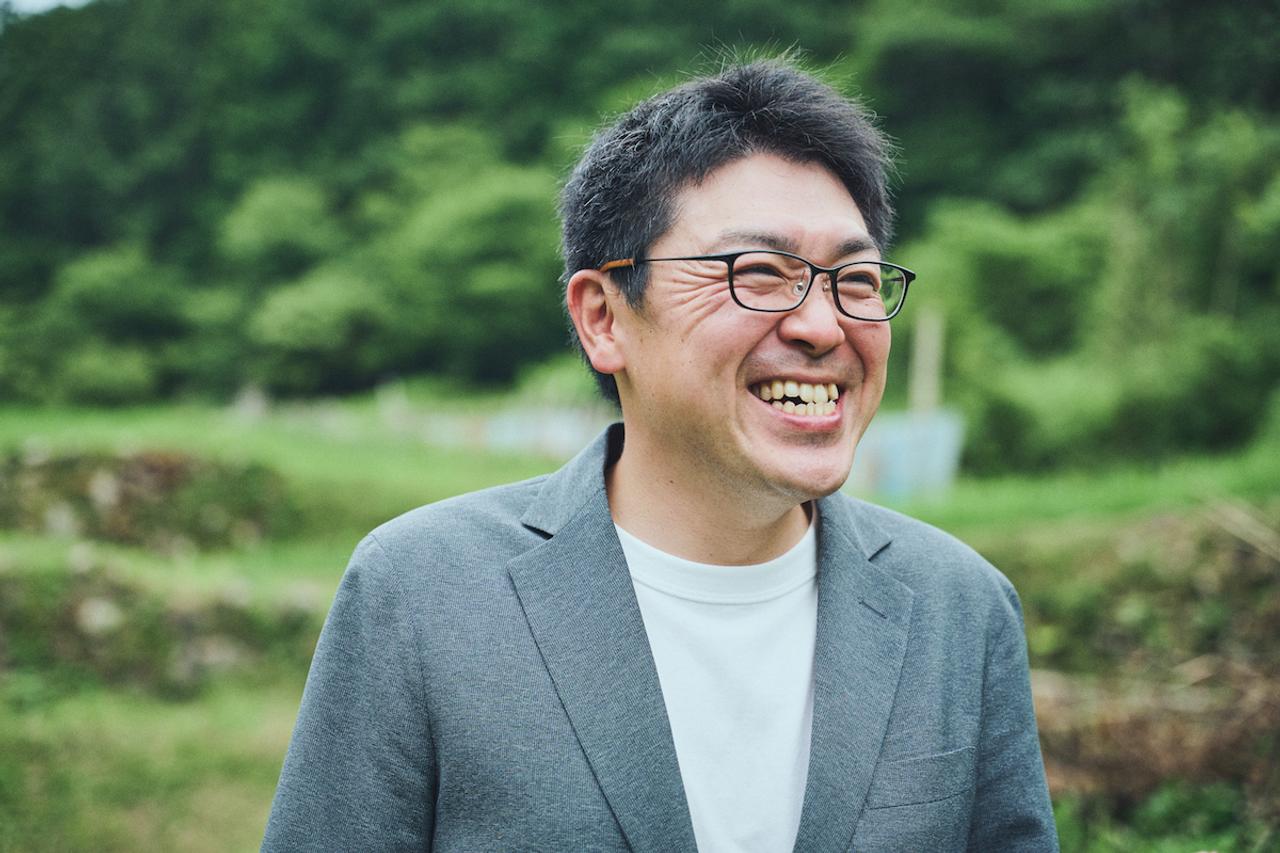
Mr. Chinzei, who originally worked at a packaging material trading company, says, “I like to create things while co-creating.” In an era when OEM is becoming mainstream, I feel that Japanese paper companies should change as wholesalers and trading companies do not carry inventory.
As the number of shoji screens, alcoves, and Japanese-style rooms is decreasing, he is searching for ways to convey the value of washi paper.
“The value that only Japanese paper can provide, such as the softness and texture of the appearancethere is. The dial of The CITIZEN also shows its unique presence.
In the future, in addition to contributing to the preservation and restoration of cultural properties, I would like to participate in manufacturing that appeals to people’s sensibilities, including industrial products such as The CITIZEN.
I would like to continue to deepen our efforts with people who sublimate Japanese paper into things that appeal to the sensibility as parts, sometimes as the leading role.” (Mr. Chinzei)
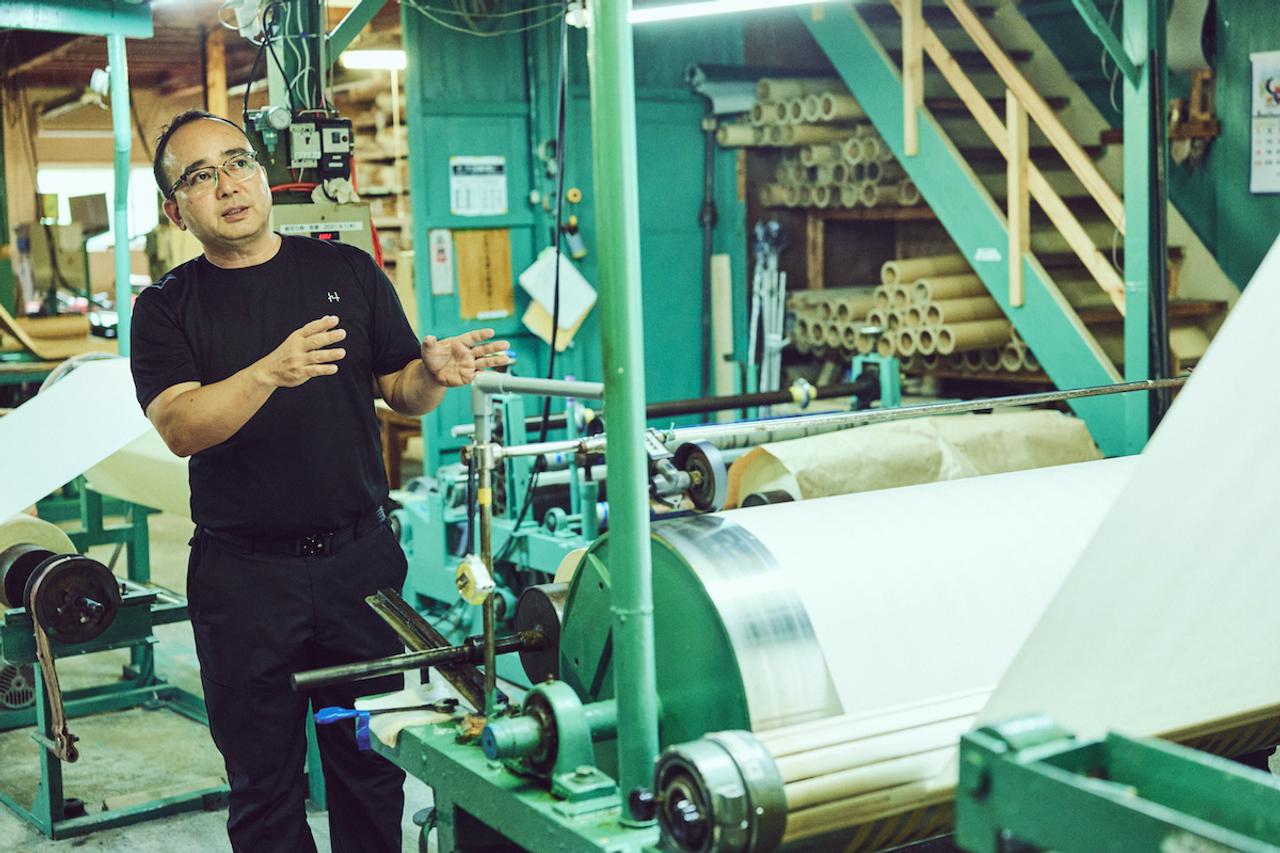
The encounter between Tosa Tengujo paper, Eco Drive, and The CITIZEN, brought together by the characteristics and technology of “transmitting light”.
Mr. Sato believes that “this initiative has further expanded the possibilities of manufacturing at Citizen Watch.” We are enthusiastic about pursuing the possibilities of expression of new dials in the future.


The Citizen High Accuracy ±5 Seconds Annual Accuracy “Photoelectric Eco-Drive” “Tosa Tengujo Paper” Japanese Paper Dial Model / Case and Band Material Super Titanium
(From the left of the image) AQ4091-56E, AQ4091-56A, AQ4091-56L 429,000 yen each including tax
Click here for more information about The CITIZEN.
Click here for The CITIZEN “Hand to Hand Story,” which shines a spotlight on skilled “hands” that are indispensable in the watchmaking process, and introduces their techniques and thoughts.
Source: BusinessInsider
Emma Warren is a well-known author and market analyst who writes for 24 news breaker. She is an expert in her field and her articles provide readers with insightful and informative analysis on the latest market trends and developments. With a keen understanding of the economy and a talent for explaining complex issues in an easy-to-understand manner, Emma’s writing is a must-read for anyone interested in staying up-to-date on the latest market news.
